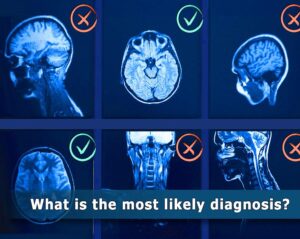- Report finds nearly 7 million older adults have Alzheimer’s dementia in the U.S. — one of the costliest conditions to society.
- 70% of dementia caregivers report that coordinating care is stressful.
- 60% of health care workers surveyed believe the U.S. health care system is not effectively helping patients and their families navigate dementia care.
CHICAGO, March 20, 2024 — The Alzheimer’s Association 2024 Alzheimer’s Disease Facts and Figures report reveals that both dementia caregivers and health care workers report difficulties in navigating dementia care within the U.S. health care system. The report provides an in-depth look at the latest national and state-by-state statistics on Alzheimer’s disease prevalence, mortality, caregiving, dementia care workforce and costs of care. The new report estimates that 6.9 million people age 65 and older in the U.S. are living with Alzheimer’s dementia, with the cost of care for these individuals this year projected to reach $360 billion — a $15 billion increase from a year ago.
This year’s special report, Mapping a Better Future for Dementia Care Navigation, provides a comprehensive look into dementia care navigation by surveying dementia caregivers and health care workers on their experiences, challenges, awareness and perceptions of care navigation in dementia care. Dementia care navigation provides clinical and nonclinical support to people living with dementia and their caregivers to overcome barriers that compromise care and health outcomes.
Key findings:
- In 2023, 11.5 million family and other caregivers of people living with Alzheimer’s or other dementias provided an estimated 18.4 billion hours of unpaid help. On average, this represents nearly 31 hours of care per caregiver per week or 1,612 hours per caregiver per year.
- A majority of caregivers (70%) report that coordination of care is stressful.
- More than half of the caregivers surveyed (53%) said that navigating health care was difficult.
- 2 in 3 caregivers (66%) also have difficulty finding resources and support for their needs.
- The top five stressors for caregivers are:
- Cost (reported by 42% of caregivers).
- Coordinating with multiple doctors (36%).
- Securing appointments (35%).
- Getting help taking a break (35%).
- Finding appropriate doctors (32%).
- Care navigation is meant to facilitate medical and social support to alleviate patient and caregiver stress. Despite coordinating care and scheduling being top stressors for caregivers, only half of the caregivers surveyed (51%) have ever talked with a health care professional about challenges finding their way through the health care system or asked for help with dementia care.
- Black and Hispanic caregivers report managing care on a daily basis (43% and 45%, respectively) compared to White caregivers (31%).
- The vast majority of dementia caregivers (97%) say that they would find navigation services helpful. Services cited most often by caregivers include:
- A 24/7 helpline (36%).
- Help with coordinating care and communication between different specialists (34%).
- Getting help in understanding their care recipient’s condition (34%).
- 60% of health care workers surveyed believe that the U.S. health care system is not effectively helping patients and their families navigate dementia care. Nearly half (46%) say that their organizations do not have a clearly defined process for care coordination and clinical pathways for patients with mild cognitive impairment (MCI), Alzheimer’s disease or other dementia.
“Dementia health care is a complex maze composed of primary care providers, specialists, social services, medication management and caregiver support,” said Sam Fazio, Ph.D., senior director, psychosocial research and quality care, Alzheimer’s Association. “As the number of individuals living with Alzheimer’s continues to grow, ensuring patients, their caregivers and families have a clear understanding of how to navigate dementia care resources is critical to improving health outcomes.”
According to the report, without help navigating the current health care system, any roadblock or detour encountered along the way can have considerable ramifications for people living with dementia and their caregivers, including:
- Delaying timely detection, diagnosis and treatment of early-stage cognitive issues or mild cognitive impairment.
- Compromising care transitions between health providers and settings. This limits high-quality, comprehensive and/or appropriate dementia care and results in worse health outcomes, higher costs and decreased quality of life.
- Causing caregivers to miss opportunities for disease education programs and connections to community-based services, like respite care, that can help reduce caregiver stress.
In July, the Centers for Medicare & Medicaid Services (CMS) will launch an eight-year pilot program in dementia care management. The Guiding an Improved Dementia Experience (GUIDE) model will work with participating health systems and providers to deliver supportive services to people living with dementia, including access to a care navigator. Three primary aims of GUIDE are to improve quality of life for people living with dementia, reduce strain on their unpaid caregivers and enable people living with dementia to remain in their homes and communities.
“There is growing momentum in this country to enhance dementia care navigation,” Fazio said. “Dementia care navigation programs have shown they can be a huge benefit to people living with dementia and their caregivers. Unfortunately, these programs are not widespread across the country. We hope this report will be a catalyst for change.”
Get additional data and statistics from the report (PDF) for Alzheimer’s disease prevalence, mortality, cost of care, caregiving and dementia care workforce. Full text of the 2024 Alzheimer’s Disease Facts and Figures report, including the accompanying special report, Mapping a Better Future for Dementia Care Navigation, can be viewed at alz.org/facts. The report will also appear in the May 2024 issue of Alzheimer’s & Dementia®: The Journal of the Alzheimer’s Association.
About 2024 Alzheimer’s Disease Facts and Figures
The Alzheimer’s Association 2024 Alzheimer’s Disease Facts and Figures report is a comprehensive compilation of national statistics and information on Alzheimer’s disease and related dementias. The report conveys the impact of Alzheimer’s on individuals, families, government and the nation’s health care system. Since its 2007 inaugural release, the report has become the preeminent source covering the broad spectrum of Alzheimer’s issues. The Facts and Figures report is an official publication of the Alzheimer’s Association.
About the Surveys
A full breakdown of survey methodology used to inform the 2024 Alzheimer’s Disease Facts and Figures report and accompanying special report, Mapping a Better Future for Dementia Care Navigation, can be found on p. 98 of the report.
About the Alzheimer’s Association
The Alzheimer’s Association is a worldwide voluntary health organization dedicated to Alzheimer’s care, support and research. Our mission is to lead the way to end Alzheimer’s and all other dementia — by accelerating global research, driving risk reduction and early detection, and maximizing quality care and support. Our vision is a world without Alzheimer’s and all other dementia®. Visit alz.org or call 800.272.3900.













Post Comment